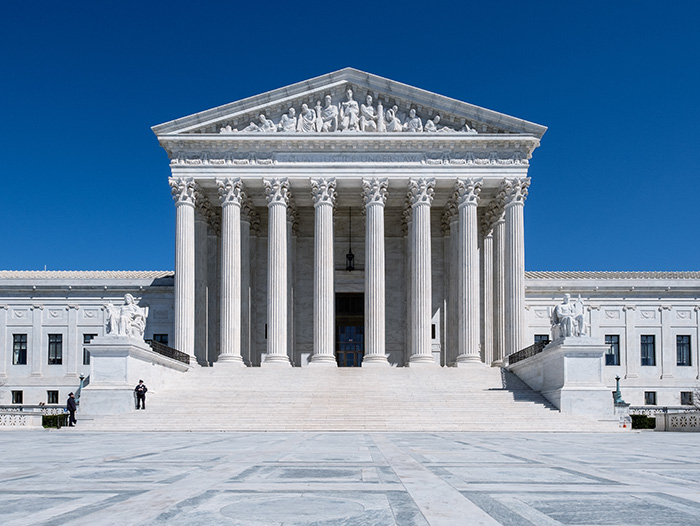Auto logout in seconds.
Continue LogoutBy Rae Woods
Over the last few months, vaccine recommendations and policy have changed rapidly, leading to growing confusion and uncertainty among both patients and providers. Radio Advisory's Rae Woods outlines the impacts of these changes, what to expect in the near term, and what leaders can do to prepare.
It's no secret that HHS Secretary RFK Jr. has strong opinions about vaccines and a history of spreading misinformation about science and medicine. Over the last few months, we've seen that rhetoric turn into a series of actions that fundamentally change the way agencies like CDC and FDA operate — shifting recommendations for the public and introducing confusion for consumers and clinicians.
Contention over vaccine policy appeared to hit a peak in September, with all eyes on how the Advisory Committee on Immunization Practices (ACIP) would or would not change vaccine recommendations. But in some ways, it didn't matter what the committee decided. While the ACIP did make changes (more on that below), other powerful actors stepped in, bypassing the committee to issue their own recommendations and make decisions on coverage and accessibility. Those efforts were largely focused on preserving existing vaccine policies, but it's unclear how much that work preserve vaccine access.
Confusion and misinformation coming from the agencies coupled with existing (and growing) distrust will dampen vaccine uptake, which in turn will have very real consequences for patients, members, and healthcare business. Here's a reminder of some of the key milestones that have happened so far — and some guidance on what you can do as we enter respiratory virus season.
What's been happening with vaccines?
In June, HHS Secretary Robert F. Kennedy Jr. dismissed all 17 members of CDC's ACIP and replaced them with his own appointees.
Kennedy initially named eight new ACIP members, with one leaving soon after. He later appointed five additional members, bringing the total up to 12. Several of the new ACIP members have expressed vaccine skepticism, particularly over COVID-19 vaccines.
So far, the newly revamped ACIP has had two meetings, the first with seven members and the second with all 12. During the first meeting, which took place in late June, members announced plans to review the safety of the childhood vaccine schedule, recommended a new preventive therapy for respiratory syncytial virus (RSV), and recommended against the use of a preservative in some multidose flu vaccines.
During ACIP's second meeting, members voted to delay the MMRV vaccine and no longer recommend the COVID-19 vaccine for most adults ages 18 and older — a decision that could make it harder for people who want the vaccine to receive it. However, members ultimately voted against requiring a prescription for COVID-19 vaccines due to access concerns.
On Oct. 6, CDC adopted ACIP's new recommendations, updating its guidelines for COVID-19 and MMRV vaccines. CDC now recommends people apply "individual-based decision-making" for COVID-19 vaccines and that children receive a standalone varicella vaccine instead of the combined MMRV vaccine.
The new COVID-19 vaccine recommendations also appear to contradict previous decisions to restrict eligibility for the shots. In May, Kennedy announced that CDC would no longer recommend routine COVID-19 shots for healthy children and pregnant people. However, CDC's updated adult immunization schedule now recommends "shared clinical decision-making" for pregnant people instead of having no guidance.
In May, FDA Commissioner Marty Makary and Vinay Prasad, director of the Center for Biologics Evaluation and Research, published an article in the New England Journal of Medicine urging drugmakers to conduct placebo-controlled clinical trials for new COVID-19 vaccine — something that health experts have said will be expensive and time consuming and could delay access to new vaccines.
They also signaled that FDA planned to limit the approval of new COVID-19 vaccines to certain high-risk groups. In September, FDA followed through on this intention, limiting the approval of new COVID-19 vaccines from Pfizer, Moderna, and Novavax to individuals ages 65 and older or those with an underlying condition that could increase their risk of severe disease.
In late August, CDC Director Susan Monarez was ousted from the agency just weeks after her confirmation due to disagreements with Kennedy over recent vaccine policy changes. At the same, four senior CDC officials abruptly announced their resignations from the agency, citing funding cuts, the political climate, and a broader attack on public health.
During a contentious Senate hearing, Kennedy defended his recent decisions surrounding recent upheaval at CDC, saying that they were "absolutely necessary." Monarez later rebutted Kennedy's viewpoint in her own Senate hearing where she testified about her firing and said that she was removed from CDC she refused to pre-approve vaccine recommendations and fire career scientists.
Other healthcare organizations and state agencies have entered the vaccine debate by issuing their own recommendations and policy changes — to combat or to support decisions made at the federal level.
In response to FDA narrowing its approval for new COVID-19 vaccines, the American Academy of Pediatrics (AAP) issued its own COVID-19 recommendations. Currently, AAP recommends all children ages six months to 23 months receive a COVID-19 vaccine to help protect them against severe illness. Healthy children ages two to 18 can also be vaccinated if their parents prefer.
AHIP also released a statement last month saying it planned to cover all ACIP-recommended vaccines as of Sept. 1, 2025, including updated COVID-19 and flu vaccines.
At the state level, California, Oregon, Washington, and Hawaii partnered to form the West Coast Health Alliance and issued their own recommendations for COVID-19, flu, and RSV vaccines. Separately, Massachusetts is requiring insurers to cover vaccines recommended by the state department of public health, regardless of what federal guidelines stay.
However, some states are moving in the opposite direction. In August, Florida announced plans to begin phasing out all childhood vaccine mandates, making it the first state to do so.
The new reality: A patchwork of vaccine guidance, coverage, and access
These new changes, as well as the rapid-fire pace at which they have been implemented, have created a patchwork system of vaccine access, coverage, and information, furthering adding to confusion and uncertainty for patients and providers.
While some of the dust has settled, many questions remain. How do healthcare organizations combat misinformation and manage genuine concern and questions over medical advice? How long will commercial insurers be able use past guidance to inform future coverage decisions? What does coverage look like for government payers? How will cancelled research contracts impact future vaccine development and disease readiness? Can we trust CDC — even though the agency and its advisory committee have been overhauled in recent months? Who do we trust? And how do we align all the differing recommendations and advice?
Even with near-term coverage decisions largely in place, consumers still need a clinician to offer them vaccinations. Although some medical organizations and states have tried to issue their own recommendations to counteract recent federal changes, they won't be able to completely cover all patients or situations. The reactionary measures will not successfully plug the hole that misinformation and evolving recommendations have created.
This chaotic environment will negatively impact vaccination rates. As fewer people get vaccinated against COVID-19, the flu, and other infectious diseases, the burden of these diseases will only become greater, leading to a higher number of and more severe cases. Hospitals, already battered by financial and workforce challenges, will be pushed even further to the brink if cases of respiratory illness surge during the fall and winter.
What matters now is that healthcare leaders find ways to quickly and effectively adapt to this new reality to ensure that they're able to meet the needs of their organizations, staff, patients, and the public.
3 things health leaders must prioritize
Amid these ongoing changes and challenges surrounding vaccines, here are three things you can expect in the near term — and what you can do to address them.
1. Expect more questions and be prepared to answer them
Because recommendations have and will continue to change, confusion will grow for both providers and patients. To help your staff effectively address questions that patients or members may have, compile a single source of truth. Provide resources and talking points to help staff members hold complex conversations and lead with evidence while also holding space for genuine concern and curiosity. Make sure that you're accounting for the additional time and resources needed for these conversations in your workflows, rather than asking an already burned-out workforce to spend more time and energy managing difficult conversations.
2. Increase your capacity ahead of a more severe respiratory season
There's a good chance that the upcoming respiratory season will be more severe than before, especially if vaccination rates dip due to changing recommendations, access challenges, and more.
To manage extreme seasonality, hospitals and health systems should shore up their capacity now and ensure they have the right staff — both people and expertise — in place to handle higher acuity patients. Be sure that your throughput and length of stay (LOS) are efficient as possible.
For leaders looking for strategies to hone their acute care operating models, I highly recommend checking out Advisory Board's resources on operational efficiency:
- Provider operations topic
- 3 key insights from our health system margin performance benchmarks
- 3 strategies to optimize your patient flow
- Identify your biggest opportunities for care variation reduction
3. Track and analyze data to measure the impact of these changes
As trust in public health erodes, I want to come back to a word of caution I've given before: Don't fall into the trap of merely raising the alarm.
Health leaders have the power — and the responsibility — to systematically track the effects of policy changes, starting now. Track things clinical impacts like vaccination rates, ED volumes, and patient acuity along with operational changes like length of stay, staff turnover, and rates of workplace violence. The healthcare industry will need a more complete picture of how vaccine policies and mistrust are affecting the cost and quality of care. We must work together to build a compelling, data-driven case that resonates with business leaders, the public, and with policy makers who will continue to make decisions around vaccine policy and public health.
The policy environment is changing rapidly. To help keep health leaders informed and focused on their next best action, Radio Advisory has been adding bite sized policy breakdowns to the end of episodes and releasing special mini episodes on things like the passage of the One Big Beautiful Bill Act, the government shutdown, and vaccine policy.
Subscribe to Radio Advisory and visit our policy updates timeline to keep track of all the big policy changes.
(Moniuszko, CBS News, 10/6; AHIP press release, 9/16; Jacoby, TODAY, 10/9; Gardner, Politico, 10/8; Fiore, MedPage Today, 10/10)
Don't miss out on the latest Advisory Board insights
Create your free account to access 1 resource, including the latest research and webinars.
Want access without creating an account?
You have 1 free members-only resource remaining this month.
1 free members-only resources remaining
1 free members-only resources remaining
You've reached your limit of free insights
Become a member to access all of Advisory Board's resources, events, and experts
Never miss out on the latest innovative health care content tailored to you.
Benefits include:
You've reached your limit of free insights
Become a member to access all of Advisory Board's resources, events, and experts
Never miss out on the latest innovative health care content tailored to you.
Benefits include:
This content is available through your Curated Research partnership with Advisory Board. Click on ‘view this resource’ to read the full piece
Email ask@advisory.com to learn more
Click on ‘Become a Member’ to learn about the benefits of a Full-Access partnership with Advisory Board
Never miss out on the latest innovative health care content tailored to you.
Benefits Include:
This is for members only. Learn more.
Click on ‘Become a Member’ to learn about the benefits of a Full-Access partnership with Advisory Board
Never miss out on the latest innovative health care content tailored to you.


